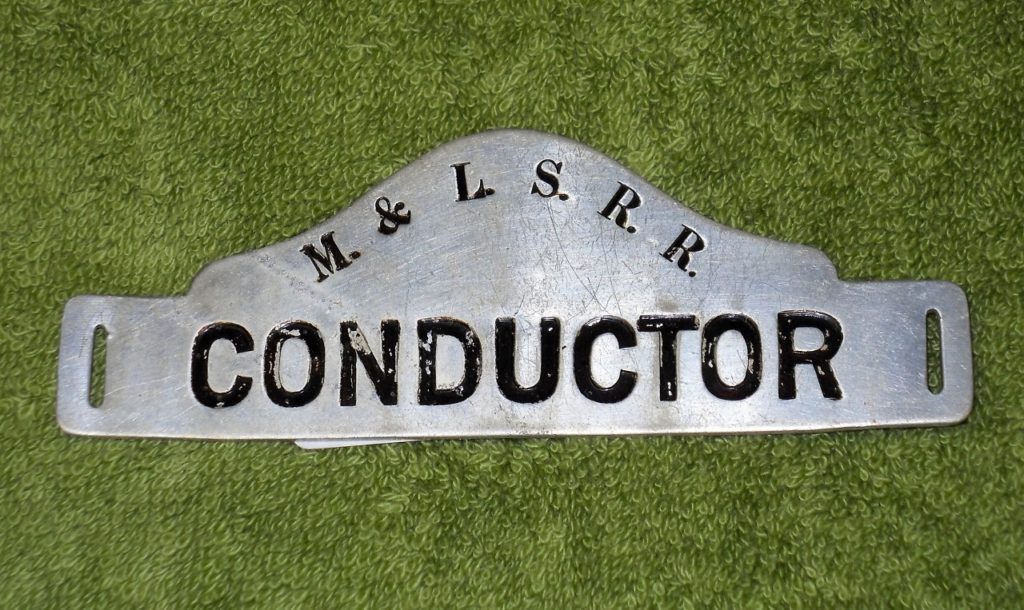
Manistique and Lake Superior Railroad conductor hat badge donated by Gregory R. Miller (2015)
The Story of the Hat Badge
The above pictured hat badge was generously donated to the Historical Society by Gregory R. Miller in 2015. Mr. Miller writes: “Shortly before the demise of the M. & L.S. R.R. [in 1968], I was taking pictures of the recently painted snow plow. The boxcar color had given way to a bright fire-engine red. I was noticed by an employee of the railroad who asked if I wanted to see the inside. Of Course! He proceeded to show me the snowplow and gave me a tour of their still standing engine house. I was also told of the railroad’s history, shown pictures and given the conductor’s badge as a souvenir.”
“A few days later, I was photographing the Shingleton station and rounding the curve from the east came M. & L.S. # 1, a string of freight cars and a caboose. The engineer (I think Bill Miller was his name) asked if I wanted a ride. Silly question! I climbed into the cab and listened to his tales of when he was a fireman during the days of steam, as we hauled the strings of cars to Doty, a group of sidings a few miles down the line. He then picked up a few cars for the return trip to Manistique and dropped me off in Shingleton. I think I was probably one of the Haywire’s last passengers.”
“The conductor’s badge has been one of my prized possessions for around 50 years, but it begs to be returned to where it is understood and appreciated. I hope you will include it in your display.”
Haywire Spur Railroad Spike
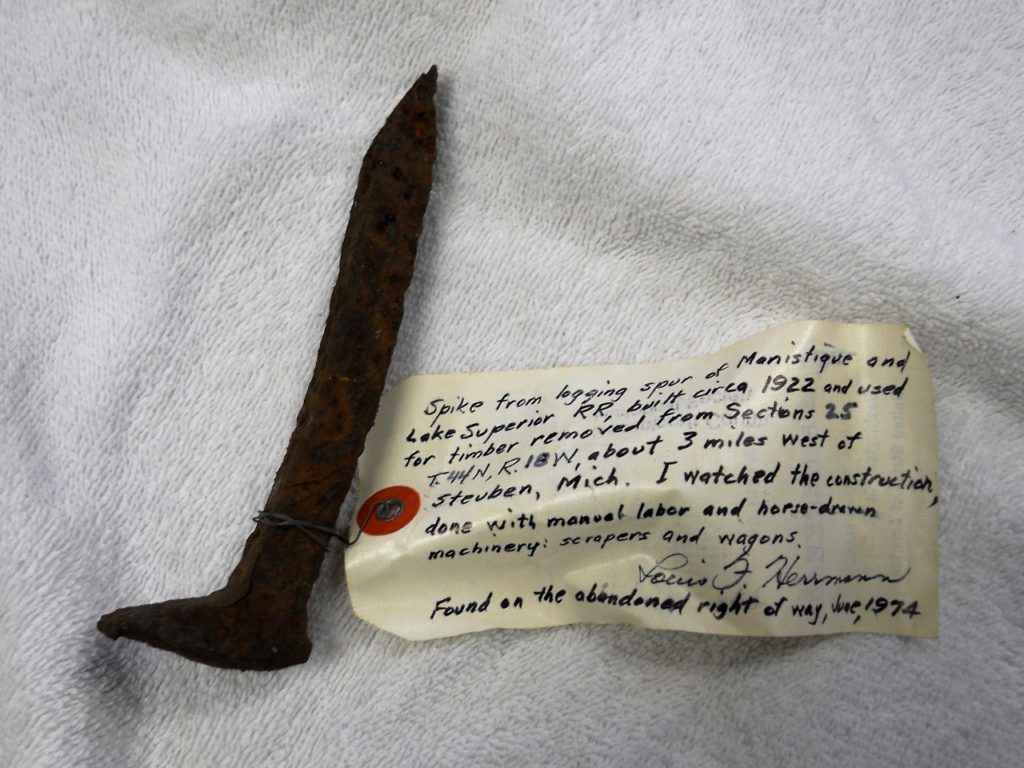
Spike from the Haywire line found on abandoned right of way in June of 1974. Donated by Louis F. Herrmann
Pictured above is a “spike from a logging spur of the M. & L.S. R.R., built circa 1922 and used to remove timber from Sec. 25, T 44 N, R.18 W, about three miles west of Steuben, Michigan. I watched the construction [of the spur] done with manual labor and horse drawn machinery, scrapers and wagons.” Louis F. Herrmann.
Locomotive Bell
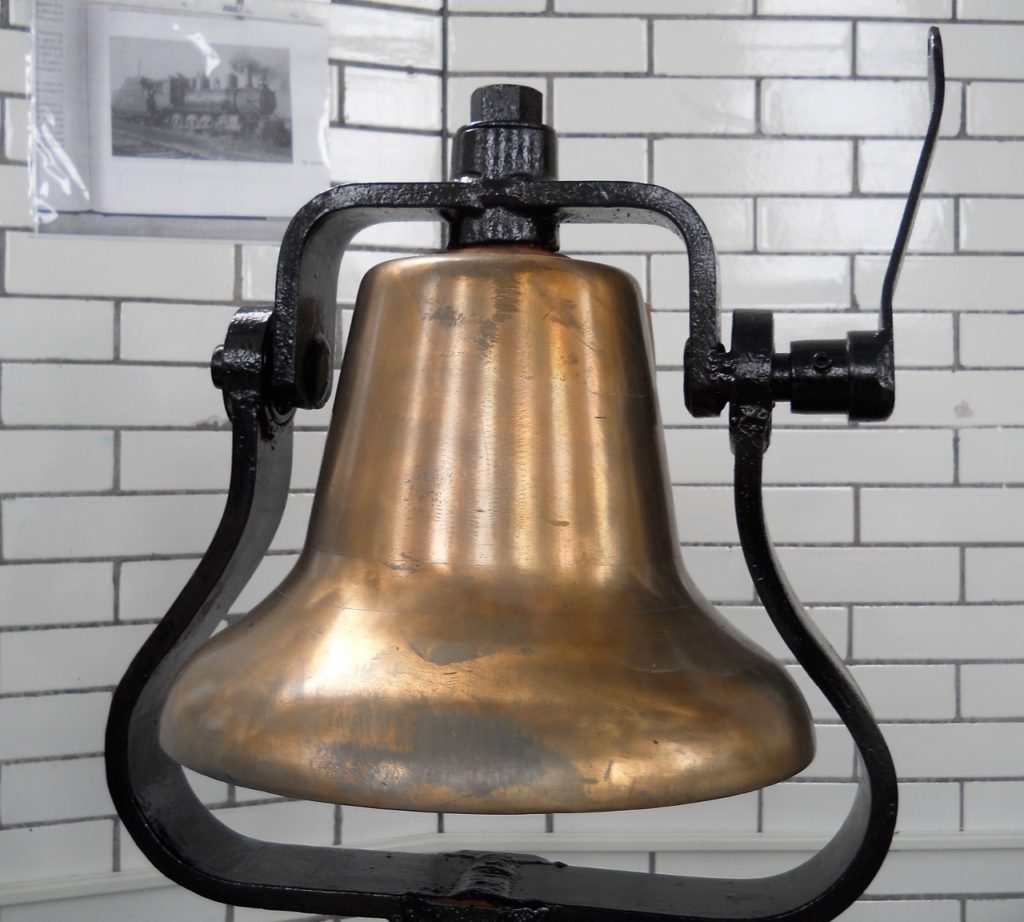
Shown above is the bell from the last Haywire engine. The bell is on permanent display in the Manistique water tower.
Grindstone from Logging Camp on Haywire Line
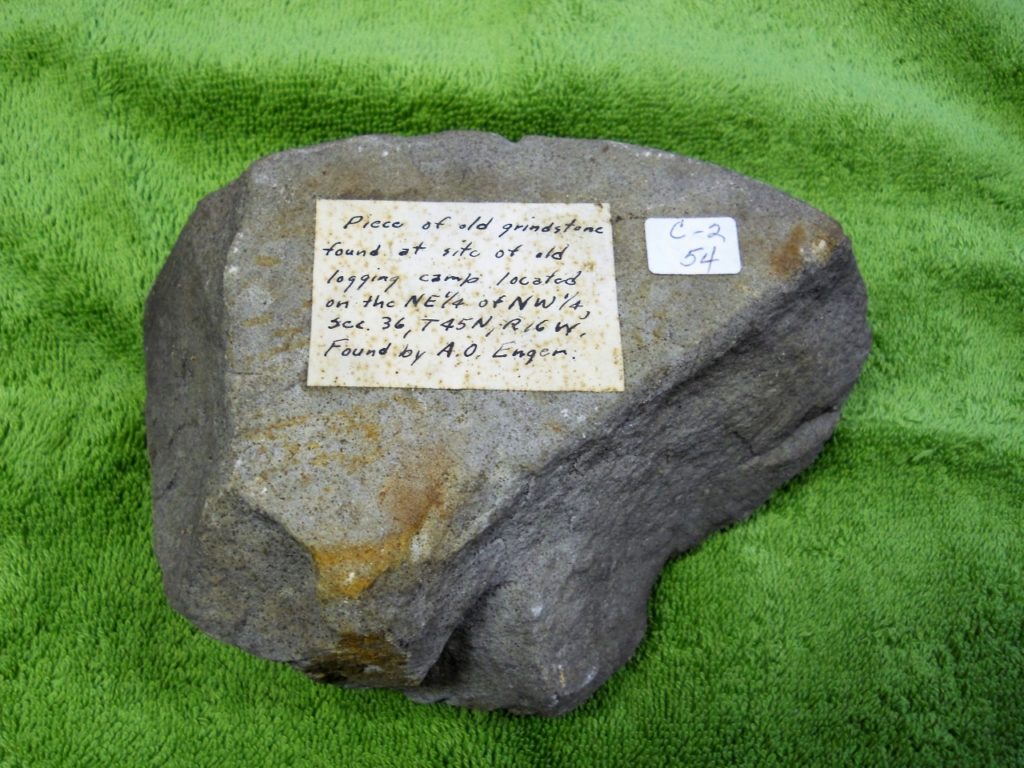
Piece of an old grindstone found at the site of a logging camp located on the NE 1/4 of NW 1/4, Sec. 36, T. 45 N, R. 16 W. The grindstone fragment was discovered by A. O. Enger.
Bookends
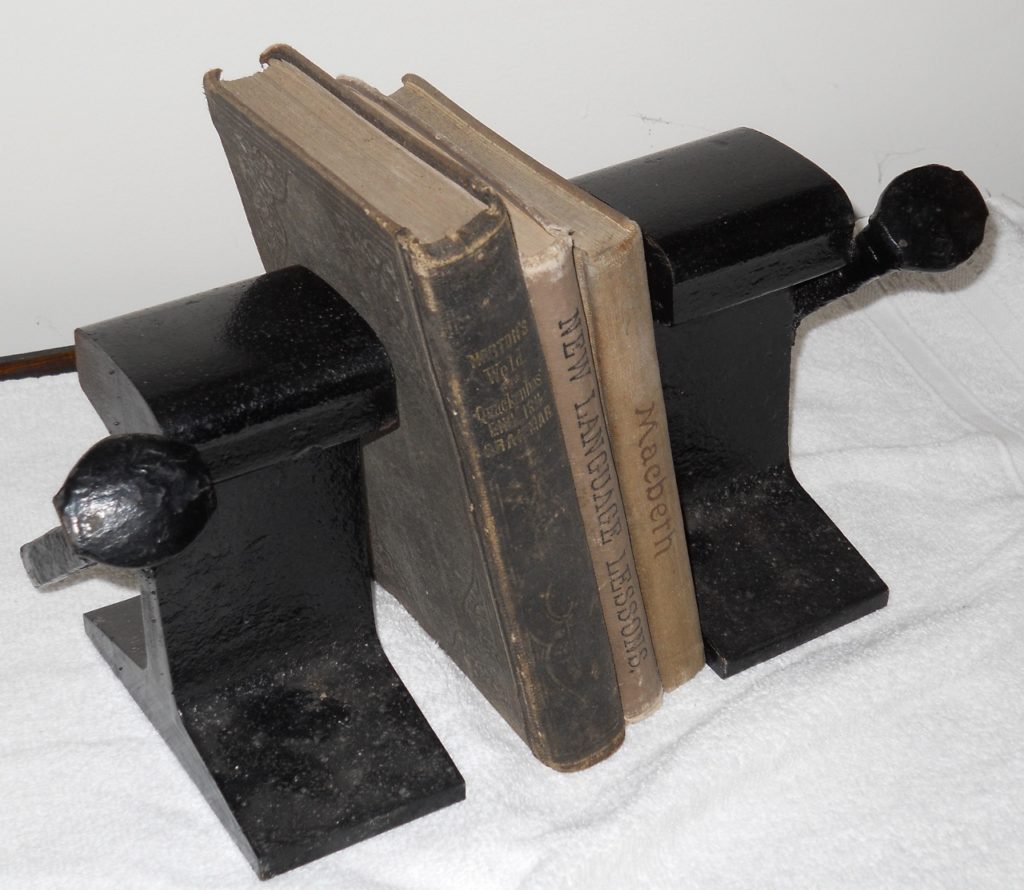
Set of bookends made from Haywire rails and spikes.
Photo of Engine No. 8
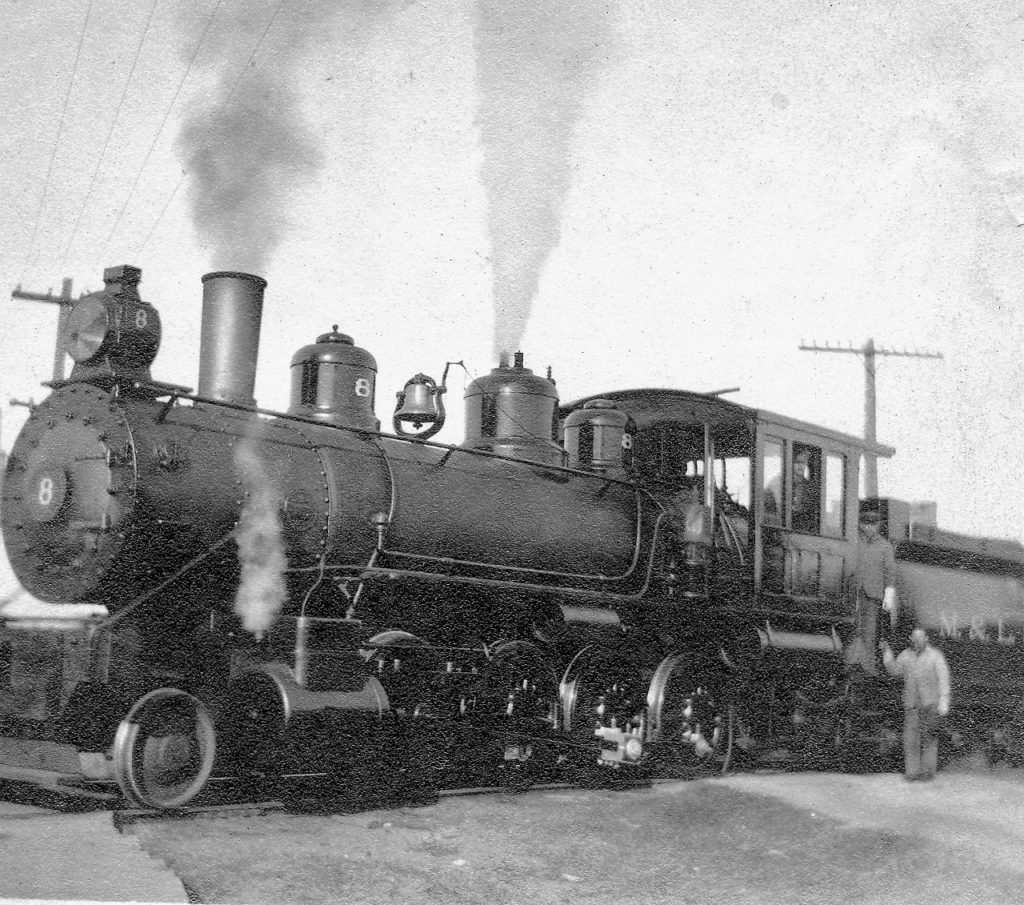
Engine No. 8 was acquired in 1912 from the Atlantic Mining Copper Range. The engine was renumbered 2380 sometime prior to 1952 and was scrapped in 1953. Niles and Helmka Families Collection
